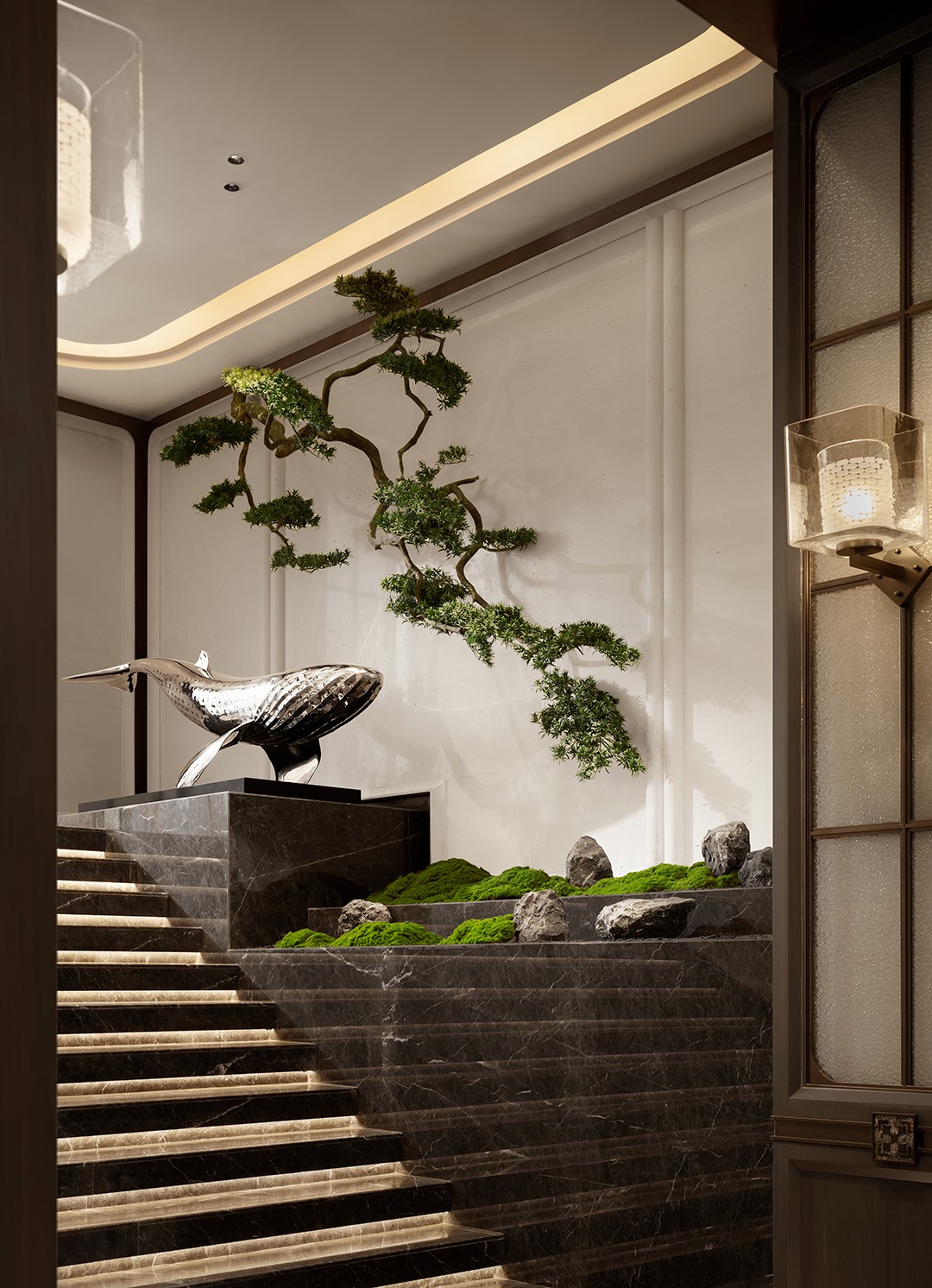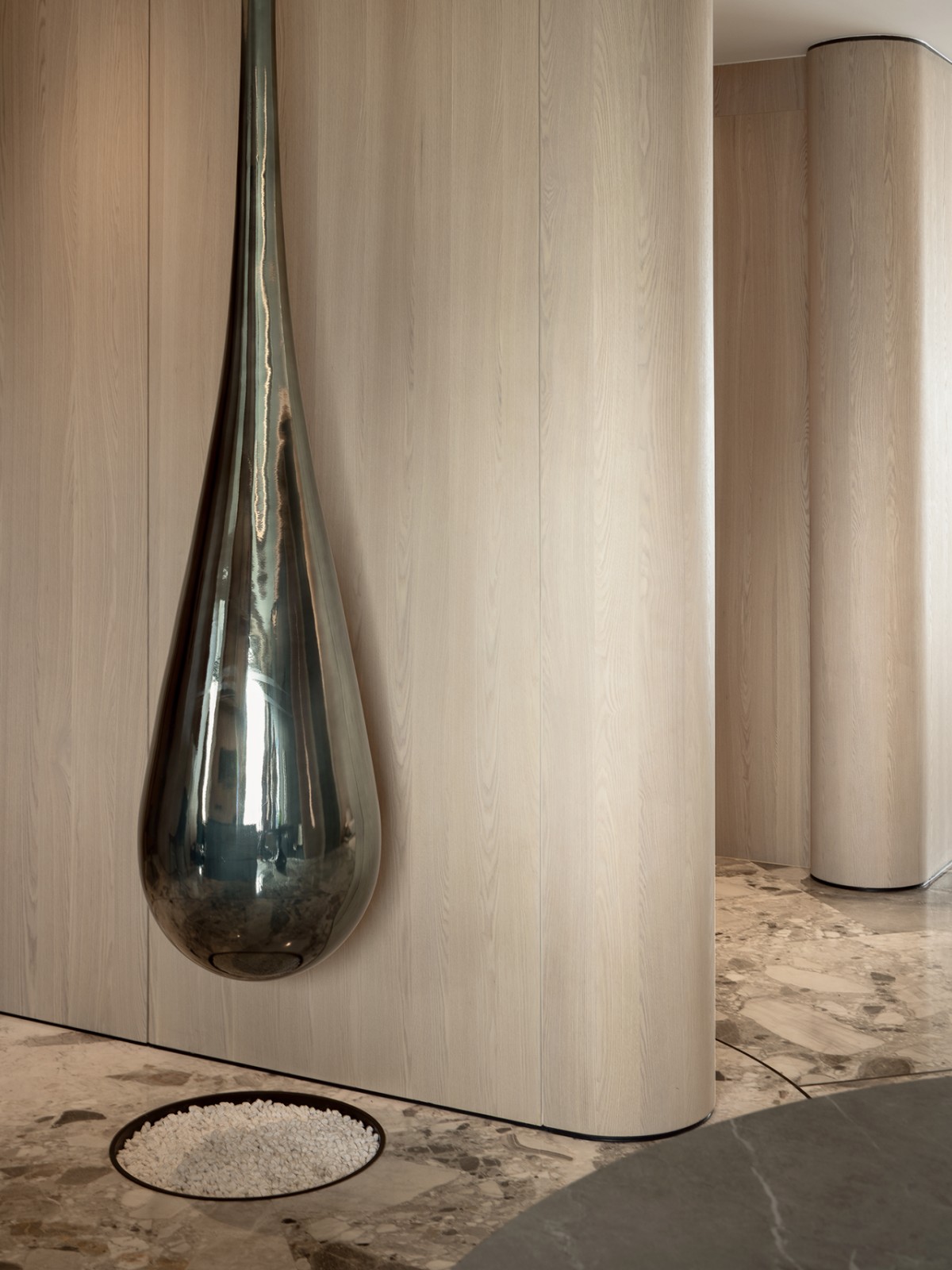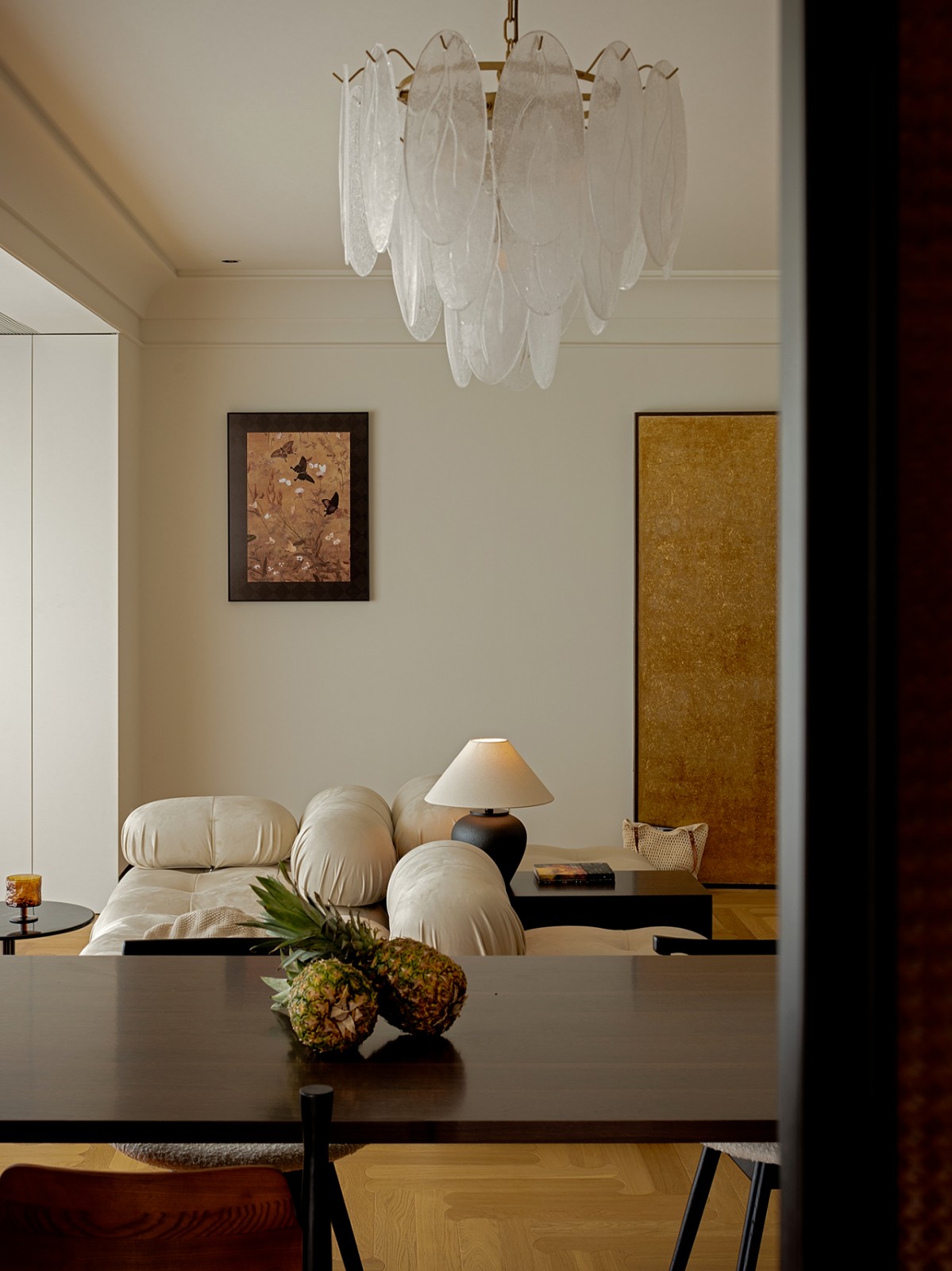House W Wolfertstetter Architektur
2016-01-08 12:00
© Matthias Kestel
马蒂亚斯·基斯特尔


架构师提供的文本描述。这所房子坐落在慕尼黑以东的一处多山的缅因州风景中,在一个村庄的边缘。南面和西面,视野透过分散的农场向景观开放,村庄位于物业的东北方向。我们决定建立一个半公共通道,与房屋和车库接壤。花园的面积一方面隐藏在街道上,另一方面又向南边和西边的乡村开放。在这种情况下,房屋也以同样的方式作出反应,将60平方米的大立面向西南方向倾斜。你通过立面上的一个壁龛进入房子,从那里已经可以看到房子,进入花园和私营部门。
Text description provided by the architects. The house is located in a hilly moraine landscape east of Munich on the edge of a village. South and west, the view opens to the landscape through scattered farms, the village is situated north-east of the property. We decided to create a semi-public access area, which is bordered by the house and carport. The garden area is on the one hand hidden from the street, on the other hand it opens at the same time towards the countryside to the south and west. The house responds in the same way on this situation by orientating the 60m² large façade opening to the south-west. You enter the house through a niche in the façade, from which already falls the view through the house into the garden and the private sector.
© Matthias Kestel
马蒂亚斯·基斯特尔


底层的布局是围绕着一个中心街区展开的,其中有一个无障碍的浴室和建筑设备。沿着北面,有一个很深的壁橱,可以在这所没有地下室的房子里提供储存空间。一楼面积的三分之二由开放式厨房、餐厅和生活区占据,该区域在大玻璃表面上与外部空间在空间上相连。这部分房子完全是两层楼的空间.通过楼梯,你到达楼上一个狭长的画廊。这是一个工作空间,它也提供对田野的看法,并提供通过天窗与日光。在画廊的后面有两间带有浴室的卧室,这是房子里的大部分私人区域。
The layout on the ground floor develops around a central block in which a barrier-free bathroom and building equipment are housed. Along the north facade runs a deep closet to provide storage space in this house without basement. Two thirds of the groundfloor area is occupied by an open kitchen, dining and living area, which connects spatially over the large glass surfaces with the exterior space. This part of the house is entirely a two-story space. Via the stairs you reach an elongated gallery upstairs. Here is a working space situated which also provides the view over the fields and is supplied via skylights with daylight. In the back of the gallery there are two bedrooms with a bathroom as most private zones in the house.
© Matthias Kestel
马蒂亚斯·基斯特尔


Floor Plan


© Matthias Kestel
马蒂亚斯·基斯特尔


承重墙和天花板完全是在实木建筑中建造的。墙面-建筑的南侧也有屋顶,这是可能的,没有额外的支持前面的正面。在画廊下面也可以免去柱子,由画廊的栏杆作为支撑的胶合板横梁,支撑着天花板面板以上的主地板,大约40英尺沿房屋的长边。
The load-bearing walls and ceiling panels were created exclusively in solid wood construction. The façade-construction on the south side also bears the roof, it was possible to do without additional supports in front of the facade. Also under the gallery could be dispensed with pillar, by the gallery railing was constructed as a supporting glulam beam holding the ceiling panel above the main floor about forty feet along the long side of the house.


材料木材用于建筑,但也出于环境可持续的原因,如外墙保温、屋顶和地板。未经处理的落叶松表面覆盖层遵循了这一概念。在经过的熔覆层中,第一层的对数护栏不明显地集成在一起。
The material wood was used for the construction, but also for environmentally sustainable reasons, as insulation in facade, roof and floor plate. The facade cladding in untreated larch has followed this concept. The parapets of the loggias on the first floor are integrated inconspicuously in the passing cladding.
© Matthias Kestel
马蒂亚斯·基斯特尔


Floor Plan


© Matthias Kestel
马蒂亚斯·基斯特尔


由于木结构具有较高的保温效果,结合木羊毛保温板和三层玻璃,达到了KFW 40标准。该建筑是通过一个柴火球团混合炉加热,这既提供了家庭的热水准备,以及地板加热通过一个缓冲。围绕整体生态概念,以中央通风系统,热回收和地热热交换器,以及太阳能集热器在屋顶上的供热支持。
Due to the high insulation effect of the wooden structure in combination with the wood wool insulation boards along with a triple glazing a KFW 40 standard has been achieved. The building is heated via a firewood pellet hybrid furnace which supplies both the domestic hot water preparation, as well as the underfloor heating via a buffer. Rounding out the overall ecological concept with a central ventilation system with heat recovery and geothermal heat exchanger as well as a solar collectors on the roof for heating support.
© Matthias Kestel
马蒂亚斯·基斯特尔


从大气的长期来看,大约有90吨二氧化碳被抽走,仅在大约9000万立方米的建筑用材中就被储存在房子里。木材在其生产过程中产生的材料不排放,用于加工建筑材料的能源消耗减少到运输,而不是能源密集型的水泥或砖块的生产。
About 90 tons of CO2 have been withdrawn in the long run of the atmosphere and stored in the house in the approximately 90m³ built construction timber alone. The material wood produced in its production no emissions, energy consumption for the processing of the building material is reduced to the transport, as opposed to the energy-intensive production of cement or bricks.
© Matthias Kestel
马蒂亚斯·基斯特尔


房子的表面很大程度上来自仍然可见的木质外壳,这产生了一个温暖和非常舒适的居住气候。只有选定的墙壁和天花板内衬石膏板,以覆盖电气装置。整个房子的地板都是用橡木地板做的。屋顶设计为不锈钢立缝屋顶。另一个设计主题是老年人的无障碍环境,因此也是老年人在使用房屋时的可持续性。因此,底层被设计成一套功能独立、无障碍的公寓,配有卧室和轮椅辅助浴室。
The surfaces in the house arise largely from the still visible wooden shell, which produces a warm and very human comfortable living climate. Only selected walls and ceilings were lined with plasterboard, to cover the electrical installations. The floors throughout the house are made of oak parquet industry slats. The roofing is designed as a stainless steel standing seam roofing. Another design theme is accessibility for elderly and therefore also sustainability in use of the house at the age. The ground floor is therefore designed as an independently functioning, barrier-free apartment with a bedroom and a wheelchair-accessible bathroom.




























































Architects Wolfertstetter Architektur
Location Dorfen, Germany
Category Houses
Architect in Charge David Wolfertstetter
Area 151.0 m2
Project Year 2014
Photographs Matthias Kestel
Manufacturers Loading...































